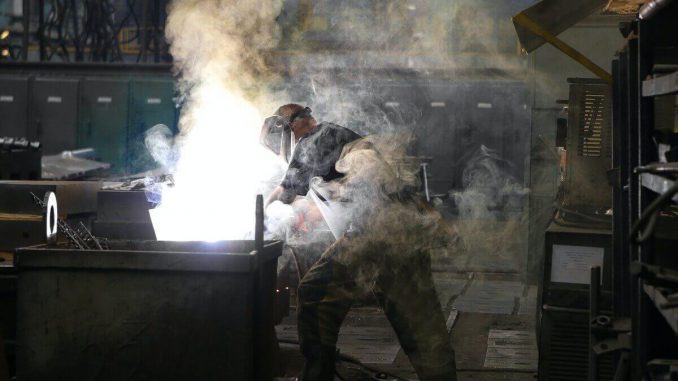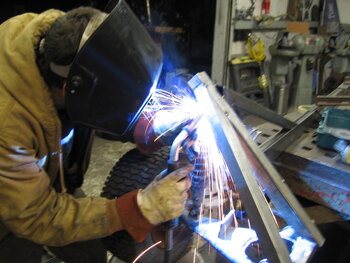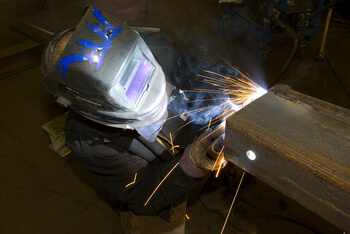
Welding, the process of joining metals through the application of heat, has evolved into a diverse and specialized craft with various techniques suited to different applications. From constructing bridges to fabricating intricate metal artwork, the art of welding plays a crucial role in numerous industries. In this comprehensive guide, we will explore the fascinating world of welding, delving into the different types of welding processes, their applications, and the unique characteristics that set them apart.
The Fundamentals of Welding
Before we delve into the specific types of welding, it’s essential to understand the basic principles that underpin this craft.
1. The Welding Process
- Welding involves melting and fusing two or more pieces of metal to create a strong, continuous joint. This is achieved by applying heat, typically generated by an electric arc or an open flame, and often utilizing a filler material to reinforce the joint.
 2. Welding Safety
2. Welding Safety
- Safety is paramount in welding due to the intense heat, bright light, and potential exposure to harmful fumes. Welders use protective gear, including helmets with darkened visors, gloves, and flame-resistant clothing, to safeguard themselves during the welding process.
3. Types of Welding Joints
- Different welding techniques are used to create specific types of joints, each tailored to the requirements of the project. Common joint types include butt joints, lap joints, corner joints, and T-joints.
Different Types of Welding
1. Shielded Metal Arc Welding (SMAW)
- Overview: Also known as stick welding, SMAW is one of the oldest and most versatile welding methods. It involves using a consumable electrode coated in flux to create an arc, producing a protective gas shield and a slag to cover the weld.
- Applications: Commonly used in construction, shipbuilding, and pipeline welding.
2. Gas Metal Arc Welding (GMAW/MIG)
- Overview: GMAW, or MIG (Metal Inert Gas) welding, utilizes a wire electrode that melts during welding. A continuous flow of inert gas shields the weld from contaminants.
- Applications: Ideal for automotive, manufacturing, and construction projects.
3. Gas Tungsten Arc Welding (GTAW/TIG)
- Overview: GTAW, or TIG (Tungsten Inert Gas) welding, involves a non-consumable tungsten electrode and a separate filler material if needed. This method offers precise control and high-quality welds.
- Applications: Commonly used for aerospace, nuclear applications, and artistic welding.
4. Flux-Cored Arc Welding (FCAW)
- Overview: FCAW uses a continuous tubular electrode with flux, eliminating the need for an external shielding gas. It is suitable for outdoor welding in windy conditions.
- Applications: Widely used in construction, shipbuilding, and heavy fabrication.
5. Submerged Arc Welding (SAW)
- Overview: SAW involves feeding a continuous wire electrode and a layer of flux over the weld. The arc is submerged beneath the flux, providing a protective environment.
- Applications: Common in the welding of thick materials, such as pressure vessels and large pipes.
6. Resistance Spot Welding (RSW)
- Overview: RSW joins metal sheets by applying pressure and passing an electric current through the workpieces. The resistance generates heat, melting the metal at the point of contact.
- Applications: Used in automotive manufacturing, appliance assembly, and sheet metal fabrication.
7. Oxy-Acetylene Welding (OAW)
- Overview: OAW utilizes a mixture of oxygen and acetylene gases to create a high-temperature flame for welding. It’s a versatile method suitable for various metals.
- Applications: Used in metal sculpture, jewelry making, and maintenance work.
8. Plasma Arc Welding (PAW)
- Overview: Similar to TIG welding, PAW uses a tungsten electrode, but the arc is constricted through a plasma gas nozzle. This results in a more focused and precise welding process.
- Applications: Commonly used in aerospace applications, electronics manufacturing, and precision welding.
9. Electroslag Welding (ESW)
- Overview: ESW is a highly efficient method for welding thick materials. It involves a consumable electrode and a layer of flux, and the heat generated melts the electrode and base metal.
- Applications: Suitable for welding thick plates in shipbuilding, construction, and heavy machinery fabrication.
10. Laser Beam Welding (LBW)
- Overview: LBW employs a highly focused laser beam to melt and fuse metals. It offers precision and can produce welds with minimal heat-affected zones.
- Applications: Common in the aerospace industry, electronics manufacturing, and medical device fabrication.
Factors Influencing the Choice of Welding Method
1. Material Type
- Different welding methods are better suited to specific materials. For example, TIG welding is excellent for aluminum, while MIG welding is versatile for various metals.
2. Thickness of Materials
- The thickness of the materials being welded influences the choice of welding method. Some methods, like electroslag welding, are particularly effective for thick sections.
3. Welding Position
- The welding position, whether horizontal, vertical, overhead, or flat, plays a role in selecting the appropriate welding method. Certain techniques may be better suited to specific positions.
4. Weld Quality and Appearance
- The desired quality and appearance of the weld are essential considerations. TIG welding, for example, provides precise and aesthetically pleasing welds suitable for visible joints.
5. Speed and Productivity
- The speed at which a project needs to be completed influences the choice of welding method. Some methods, like resistance spot welding, offer high-speed production capabilities.
6. Cost Considerations
- The cost of equipment, consumables, and the overall welding process is a crucial factor. Different welding methods vary in terms of setup costs and ongoing expenses.
Conclusion
The world of welding is a diverse and dynamic field, offering a range of techniques to suit various applications and industries. Whether you’re crafting intricate metal artwork, fabricating structural components, or assembling automotive parts, there’s a welding method designed to meet your specific needs. By understanding the characteristics of each welding type, considering factors such as material, thickness, and desired weld quality, you can make informed decisions to achieve optimal results in your welding projects. Embrace the art and science of welding, and unlock the potential to create strong, enduring connections in the world of metalworking.


Leave a Reply